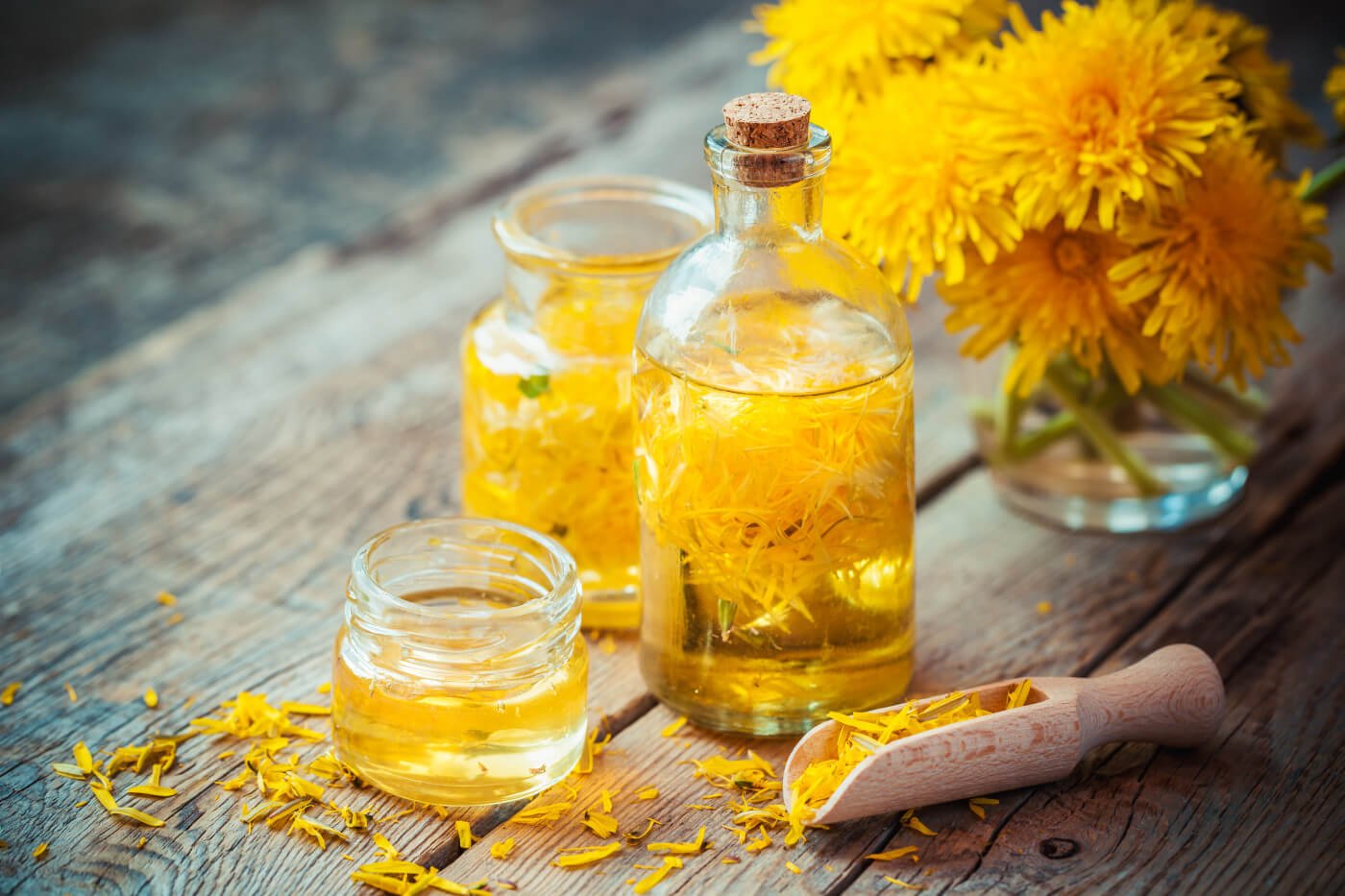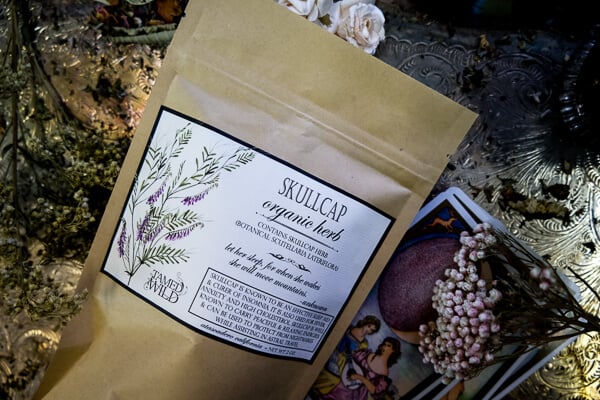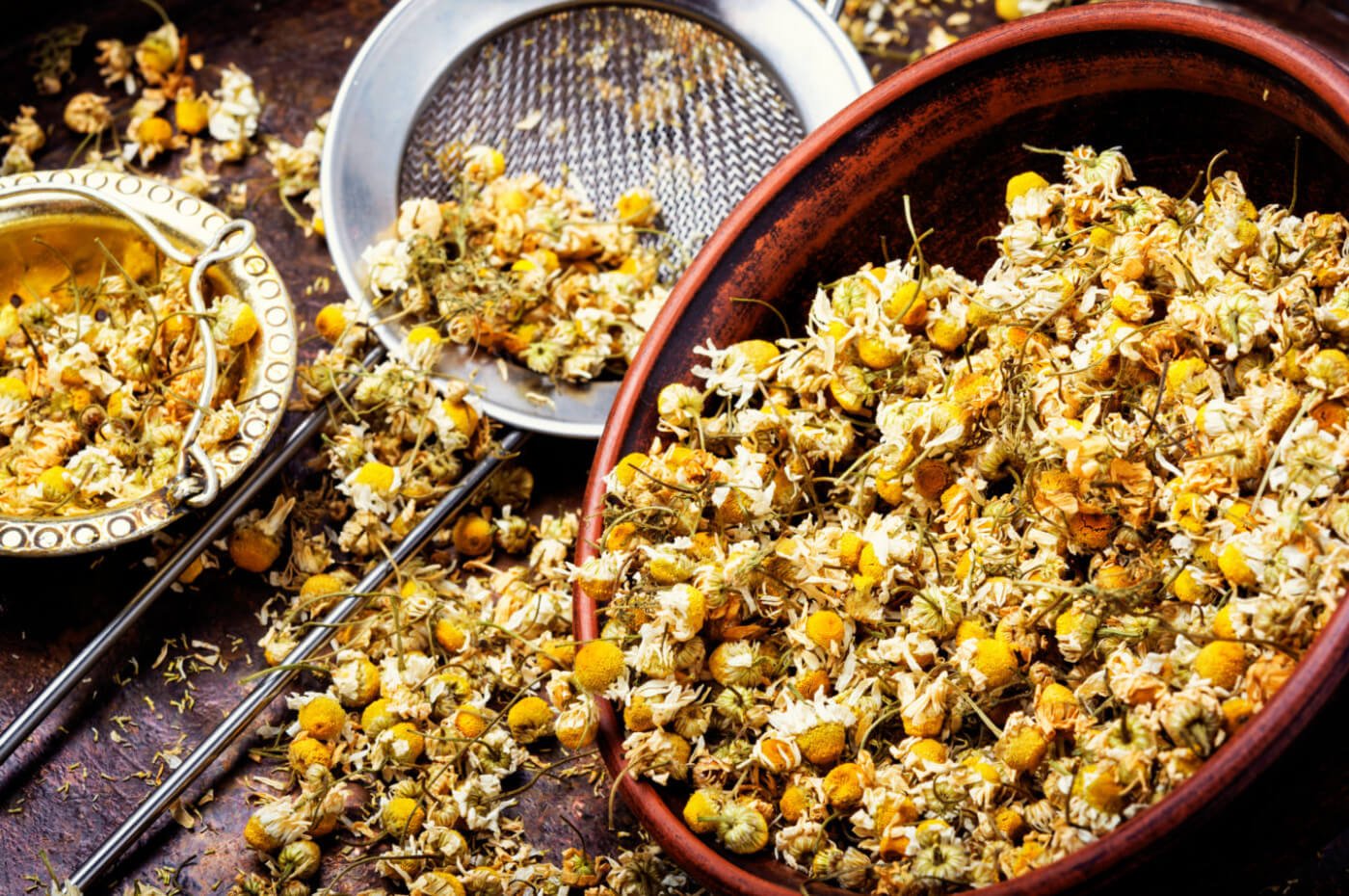Taraxacum is a large genus of flowering plants in the family Asteraceae, which consists of species more commonly known as dandelions. Other names for dandelion are lion’s tooth, tooth of the lion, bitterwort, Irish daisy, puffball, and yellow gowan. Growing up to 18 inches tall, the thin stem of a dandelion produces one yellow flower with oblong petals and yellow florets. Basal leaves grow from the stem, which secretes a white milky latex when broken. Shed petals are replaced with wispy “balls” of seeds which blow away and replant. Most of us grew up making a wish on these seeds!
Botanists consider dandelions to be herbs. The whole dandelion plant is utilized including the stem, root, leaves, and flower, and it is used in a vast number of ways such as tea, tincture, ingestion, infusion, and decoction.
No one is certain how the name dandelion came to be, but it is believed that the Gallic Normans who conquered England in 1066 called the plant “dent-de-lion,” meaning `tooth of the lion’, possibly referring to its pointed, deeply serrated leaves. Another theory is that the round seed-head reminded some of a lion’s mane. Another explanation lies in the report of a 15th-century surgeon, who wrote that dandelion was as powerful as a lion’s tooth in fighting off certain diseases.
They are commonly called weeds because homeowners don’t appreciate seeing them sprouting on their lawns, nor do farmers like it when they show up in their fields. However, dandelions are said to have many healing benefits.
Healing Properties
According to Medical News Today, people have used dandelion to help treat ailments for several centuries. Mainly, it is said to provide antioxidants which work to neutralize the harmful effects of free radicals. The human body produces free radicals naturally, but they cause harm by accelerating aging or the progression of certain diseases. Dandelions contain beta-carotene, which is an antioxidant that helps protect cells from damage. The flower of the dandelion is also full of polyphenols, which are another type of antioxidant. It is said dandelions aid in lowering cholesterol and blood pressure, as well as reducing inflammation in the body. The milky sap is also believed to help remove warts. Some people use dandelion to aid in digestion since it’s a detoxifying herb and it’s commonly used as a laxative. Although limited, but positive, some research has indicated that dandelion may help reduce the growth of certain types of cancer. So far, studies have looked at dandelion’s impact on cancer growth in test tubes and found that it may help with slowing the growth of colon, pancreatic, and liver cancer. However, these statements have not been evaluated by the FDA and you should always consult your doctor before
beginning the use of any herbs or herbal remedies. You should also not use dandelion if you’re allergic to ragweed or daisy family.
Magickal Uses & Lore
Dandelion is famously known for being the magickal flower that can grant a wish by blowing away its petals with our breath. Dandelion is connected to our subconscious, and has the ability to make our wishes a reality if only we ask. It is a symbol of abundance, joy, and luck. Corresponding crystals are sunstone, citrine, and tigers eye which all carry similar properties.
In some magical traditions, dandelions are associated with sun deities, and the goddess Aphrodite because of her connection to bees, as well as Hecate and Brigid.
Dandelion tea is often suggested before divination work to open the third eye and enhance psychic ability. You can cook with dandelions in kitchen witchcraft or regular home cooking. Although dandelion petals are thought to be the most magickal, the roots hold power of their own. Place the roots in hot or boiling water when calling upon spirits, or you can use the seeds as messengers to summon spirits through setting your intention and visualization.
This herb is connected to the air element and the planet Jupiter. You can use dandelion in sun magick, for spells and rituals centered on creativity and inspiration, as well as spells for bravery and courage. You can also create a wish jar by collecting dandelion seeds and placing them in a small jar. Whenever you’re in need of a wish, take a pinch out of the jar, blow them gently away from you and wish for what you need. Additionally, dandelion is perfect to use in spring time rituals, or to decorate your altar or sacred space for spring sabbats, especially Beltane.
Wild Medicine Herbal Deck v1

$ 31.00
The Wild Medicine Herbal Deck by Tamed Wild is a dream come true. Each deck consists of 33 Wild Medicine cards highlighting a top healing herb and its uses. Each card contains a beautifully hand painted illustration along with its… read more
** While we have provided suggestions on how to use the versatile, magickal herb of Dandelion, please keep in mind results may vary per individual and always use caution when trying a new herb. Enjoy our Dandelion recommendations and folklore, and perhaps explore your own ways to incorporate it into your daily and magickal lives!**









